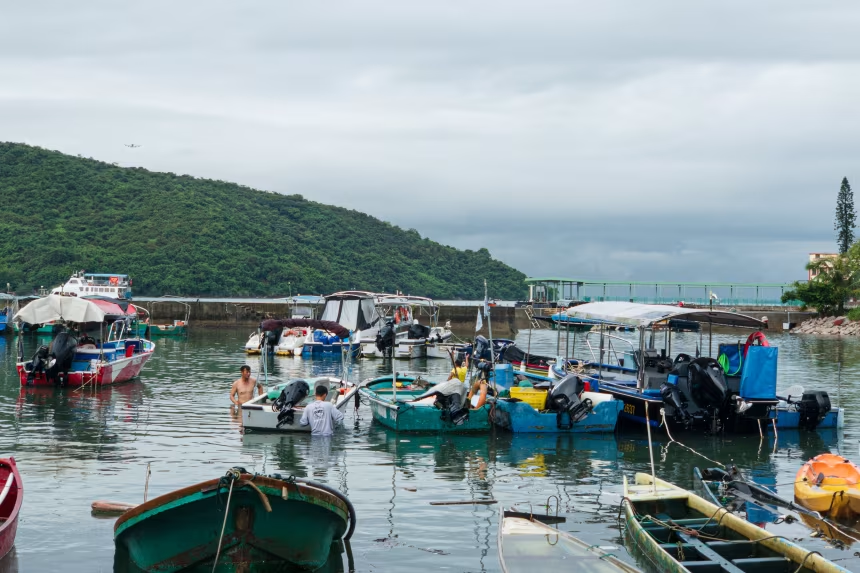Typhoon Ragasa, one of the strongest storms of the year, has hit southern China after causing deadly destruction in Taiwan. Nearly 1.9 million people have been evacuated in China’s Guangdong province, where major cities like Shenzhen, Guangzhou, and Zhuhai are now bracing for impact.
Devastation in Taiwan
Before reaching China, the typhoon caused severe flooding in Taiwan, leaving at least 15 people dead. A natural dam in Hualien County, formed by a landslide in July, collapsed under heavy rainfall, releasing 68 million tons of water. The resulting flood destroyed homes, swept away vehicles, and even washed away a large bridge.
Authorities had warned the dam could fail by October, but the rainfall from the typhoon caused it to break earlier than expected. At least 17 people are still missing, as rescue teams continue searching the flooded area.
Southern China Under Threat
After passing through Taiwan, Ragasa reached densely populated areas in southern China with hurricane-strength winds, storm surges, and widespread flooding. In Hong Kong and Macao, wind gusts of more than 160 km/h brought both cities to a standstill. Schools, public transport, businesses, and even the international airport were shut down as the highest hurricane warning was issued.
In Macao, floodwaters reached waist height, turning streets into rivers. In Hong Kong, powerful waves smashed through the doors of the Fullerton Ocean Park Hotel, flooding the lobby and sweeping people off their feet. In Shenzhen, social media footage showed towering waves crashing into coastal parks and wind speeds hitting over 180 km/h.
Mass Evacuations and Emergency Response
Authorities in Guangdong province evacuated 1.89 million people from high-risk areas by Tuesday night. In Zhuhai, a city next to Macao, residents of seaside high-rises were told to leave their homes and take shelter in government facilities, hotels, or with relatives.
One long-time resident said it was the first time she had ever been evacuated in three decades of living in the city. More than 10,000 boats were moved to safer waters, and over 38,000 firefighters were placed on standby across the region.
Why This Storm Is So Dangerous
Typhoon Ragasa grew stronger as it moved from the Philippines to Taiwan and then to China. By the time it approached the mainland, it had reached the strength of a Category 3 hurricane. The storm brought with it landslides, flooding, and storm surges of over three meters in some areas, along with destructive winds that tore down trees and damaged buildings.
Are These Storms Getting Worse?
Yes. While typhoons are common in this region, experts say that human-driven climate change is making storms more intense, unpredictable, and damaging. Ragasa is a clear example of how quickly these storms can strengthen and how difficult it is to prepare for their full impact.
How Are Cities Coping?
Cities like Hong Kong are well-equipped to handle storms, with advanced drainage systems and emergency response strategies in place. A $3.8 billion flood management network has helped prevent major disasters in the past. Even so, Ragasa’s intensity is testing these systems like never before.
Despite strong preparations, Typhoon Ragasa is a powerful reminder of the growing threat posed by extreme weather in the age of climate change.





